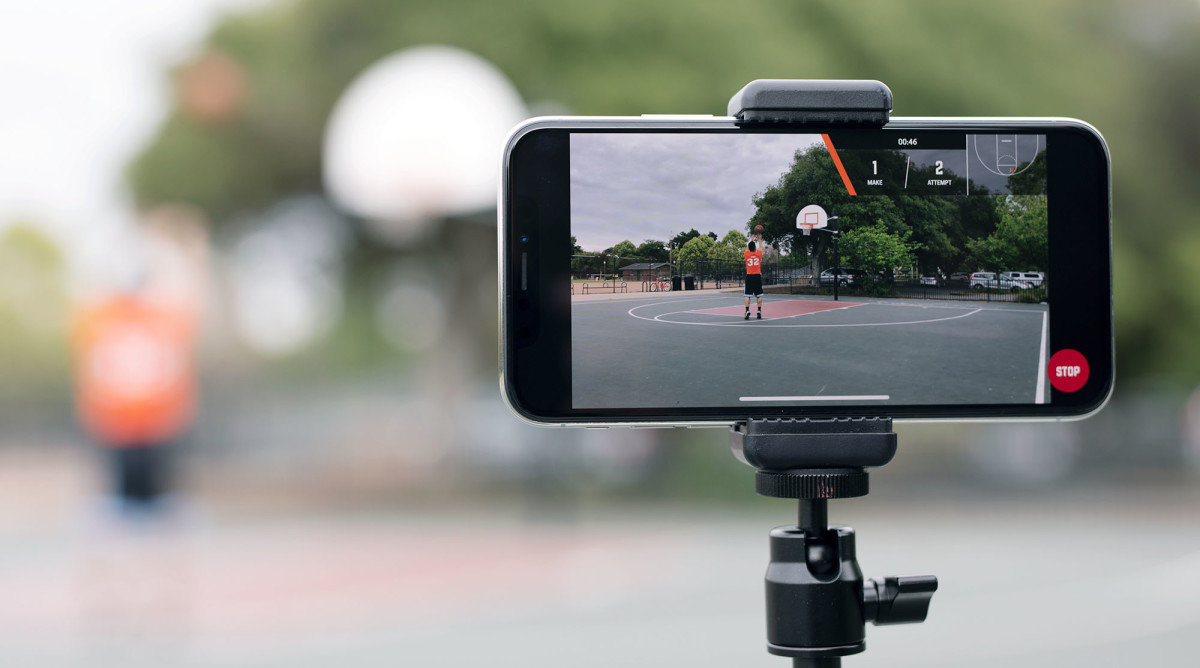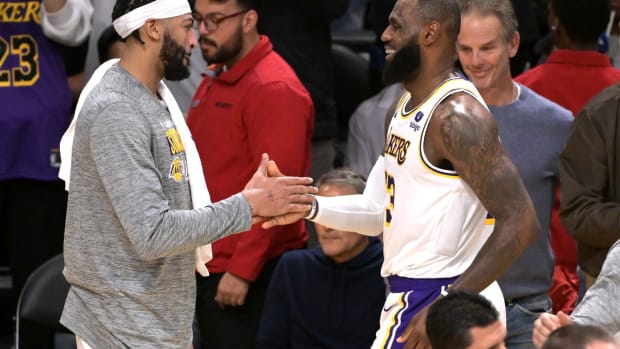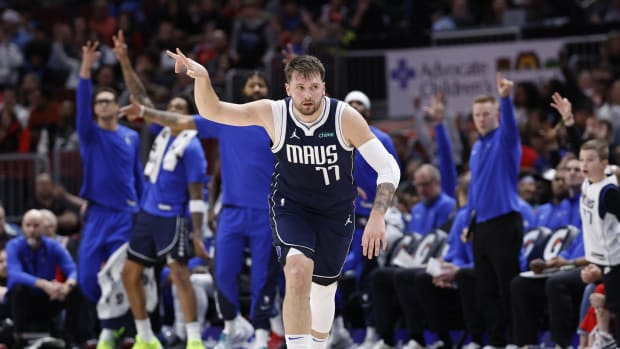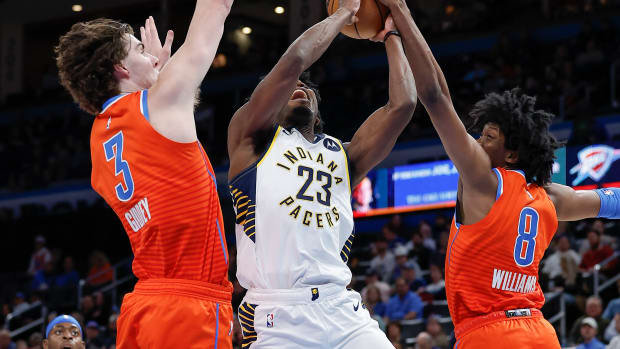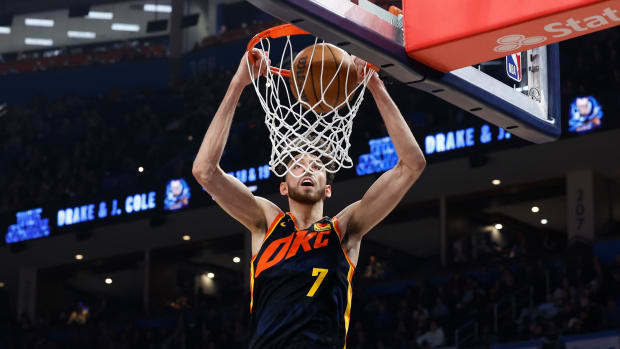How HomeCourt Plans to Make Everyone in the World a Better Basketball Player
If you’re an NBA fan, chances are you’ve seen your favorite player post some kind of workout video to Instagram during the offseason. (“It’s just work,” a teammate will inevitably add in the comments.) After all, every basketball obsessive, from high schooler to 15-year pro, is constantly working to improve their game. And now, hoopheads looking for another training advantage can simply use their phone—with the help of some artificial intelligence—to receive immediate feedback on their latest shooting session.
HomeCourt, an app that counts Mark Cuban, Sam Hinkie, Steve Nash, and Jeremy Lin among its investors, uses A.I. to track and chart your shooting during an individual workout. The app requires some setup, namely a phone or tablet and most often a tripod, but from there it’s rather easy to use. You record your workout on the court of your choosing, and HomeCourt will tell you your number of makes, misses, your hot zones, and splice individual videos of every single one of your shots—with a chance to even view them in slow motion.
“After using it the first time, basically I was like, ‘Man, this is legit,’” Lin told The Crossover. “This is something that anybody at any level can use. I’ve never really had objective, quick data like this.”
Making the Leap: Five Breakout Candidates for the 2018-19 NBA Season
The app’s simplicity makes it useful for any level of player. A high schooler without access to trainers or coaches can record themselves at a local park and immediately see where on the court they need to improve. And even for a professional like Lin, who has had workouts in which he’s put up 1,000 shots, the app offers quicker feedback (with fewer restrictions) than most NBA teams can offer.
“For the videos to already be spliced up right after you shoot, to my knowledge, that’s not available anywhere else,” Lin said. “There’s nothing else that can do this.”
The app was developed by NEX Team, a group of mostly Apple ex-pats who combined their love of basketball with Silicon Valley’s bloodthirsty desire to seemingly create an app for everything. As the story goes, co-founder of NEX David Lee wanted a way to show his family he could really shoot, but he developed stage fright whenever they actually watched him play. That’s when the thought of tracking shots while playing alone occurred to Lee.
Alex Wu, the company’s vice president of strategy and marketing, compared the app’s artificial intelligence to predictive software. The team filmed countless workouts around the Bay Area to create a large set of data points for the app’s program. No matter if you start filming in your driveway or in Oracle Arena, as long as there are a hoop and net, the app, based on the data collection, knows where to fill in the lines on the court and create your shot chart.
“If you love basketball and want to be the best you can be, you want every advantage possible,” Nash told The Crossover. “When I saw the demo, it made me go back to when I was a player at any level, when I was starting out or even a pro, I would love to have had a simple application to give me this feedback.
“There are times in your career where you can fool yourself into thinking everything is great, and you realize after a summer you’re not performing the way you should be. That’s how I relate it to my experience and how I would’ve used it.”
What We Learned About Kentucky's Pro Prospects During Its Bahamas Trip
Lin is already receiving inquiries about HomeCourt, from teams in China to coaches from the Nets’ G-League affiliate. It helps than Lin himself is an avid user, studying videos of his shots to help improve his footwork, posture, positioning and other small details. Other adopters of the app include the Celtics, 76ers and Duke Basketball. Kevin Cullen, Duke’s director of technology, was shown a demo of the app last September, and had the NEX Team show it to Duke coaches by the end of the year.
“They did the demo, and I went, ‘Holy crap! This is impressive,’” Cullen told The Crossover. “A lot of other companies try to do this with a lot more sophisticated devices, and require a special ball or sensors or something installed in the gym. The ease and simplicity with which this works sold me. We love the convenience. And you can understand what it does in five minutes, which says a lot about the product.”
Duke eventually started using HomeCourt after the NCAA Tournament, so not to interrupt any training regimens during the season. Players who are working out alone can choose to use the app if they wish, and they can also decide whether or not to send their shooting statistics to the coaches.
The creators of HomeCourt hope the ability to share workouts creates a community around the app. Users can post their videos for everyone else to see. There are leaderboards for people from all over the world to climb. Players can also create smaller groups to set challenges among their friends.
For now, the app hopes to be the most efficient option for basketball players looking for a real-time breakdown of their shooting session. In the future, HomeCourt hopes to do much more. The creators are testing out a shot science feature, which can track stats like release time, shot angles, and vertical jump. The app can also currently only be used for individual workouts. In the future, HomeCourt aims to have body-mapping recognition sophisticated enough to create charts for five-on-five scrimmages. (The shot science and five-on-five mapping would be of particular help to the professional teams currently using the app.)
“There are a lot of coaches and not enough teachers,” said Nash, the former two-time MVP. “And this application could potentially inform you in a way a teacher would.”
As far as costs go, the app is free for 300 shots every month, and users can choose to pay $7.99 for unlimited tracking. HomeCourt is still in its early stages, so more options could be offered in the future. There are already users in over 100 countries and 1,000 cities, according to Wu. Duke, a paying customer, is also trying to aid the app’s development, sending Lee’s team videos of workouts to help add more data points.
“I am very bullish on HomeCourt,” Cullen said. “We have a lot of companies who approach me, I get a lot of products in front of me, and rarely do I see a group of people as smart, or a product that’s as advanced as HomeCourt.”
“I had nothing like this,” Nash said of his playing days. “I didn’t have any real perspective if my training was well thought out or imagined, or if I was really improving or refining my technique. Now you have a chance of getting closer to the truth.”
Of course, any time you’re dealing with artificial intelligence, there has to be some fear of a machine takeover. That’s basically the plot to every science-fiction movie ever made. If you’ve seen Westworld or The Terminator, then you know very well how A.I. can go wrong. Fortunately, Wu insists HomeCourt won’t be the reason for any kind of apocalypse.
“Our job is not to replace humans,” Wu said when asked about one writer’s (my own) irrational fear of A.I. “Our job is to help coaches, trainers and players on what they should focus on. If we can relieve our users from more tedious and mundane tasks in an efficient way, that can help unlock potential. We very much feel ourselves as complementary and not competitive with what exists today.”






























